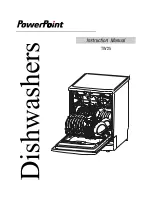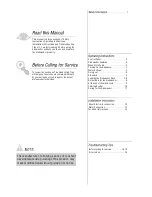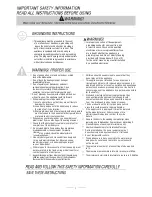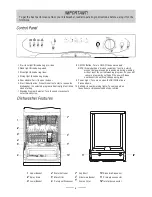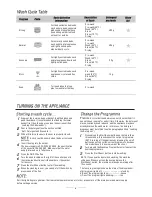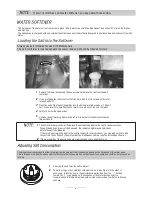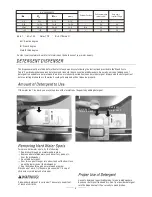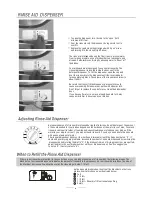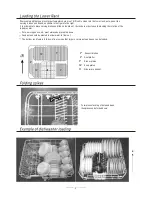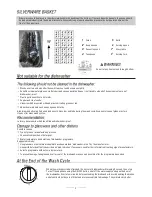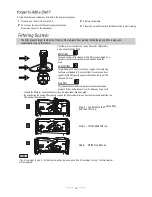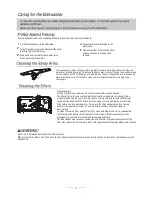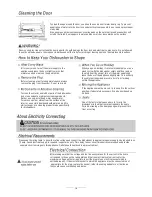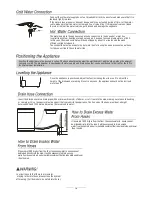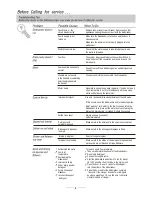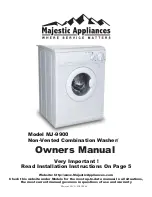
5
If the water isn't too hard, you may also prevent the formation of deposits by adding detergent.
The dispenser must be refilled before the start of each wash cycle following the instructions provided in the" Wash Cycle
Table".Your dishwashers
than conventional dishwashers. Generally, only one tablespoon of
detergent is needed for a normal wash load. Also, more heavily soiled items need more detergent. Always add the detergent just
before starting dishwasher, otherwise it could get damp and will not dissolve properly.
use less detergent and rinse aid
To remove hard water spots, try the following:
Run dishes through a normal wash program.
Remove all metal dishware, such as cutlery, pans, etc.,
from the dishwasher.
Do not add detergent.
Pour two cups of vinegar into a bowl and set the bowl face
up on the lower rack of the dishwasher.
Run the dishes through a normal wash program.
If this doesn't work, try the same process with 1 / 4 cup of
citric acid crystals instead of vinegar.
Dishwasher detergent is corrosive! Take care to keep it out
of reach of children.
Use only detergent specifically made for use in dishwashers.
Keep your detergent fresh and dry. Don't put powder detergent
into the dispenser until You're ready to wash dishes.
Detergent
for pre-wash
Detergent
for main wash
Contact your local water board for information on the hardness of your water supply.
dH
mmol/l
0~14
0~8
0~1.4
/
0
/
14~39
8~22
1.4~3.9
-
20
60
39~80
22~45
3.9~8
Mid
40
30
>80
>45
>8
+
60
20
fH
0~10
10~28
28~56
>56
Clark
° Clark: British degree
° fH : French degree
° dH : German degree
Note:1 ° dH=1.25 ° Clark=1.78
° fH=0.178mmol/l
WATER HARDNESS
Selector Position
Salt consumption
(gram/cycle)
Auto nomy
(cycles/1.2kgs)
Summary of Contents for TW25
Page 2: ...TW25 ...


